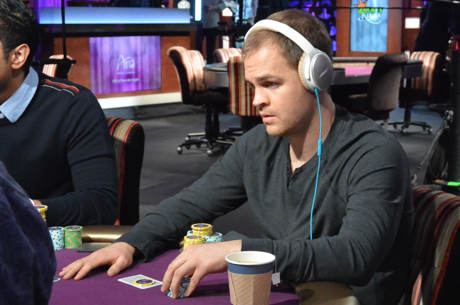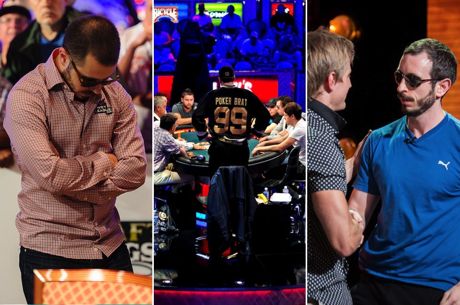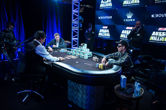A Dynamic Three-Way Hand Deep in the PCA Main Event
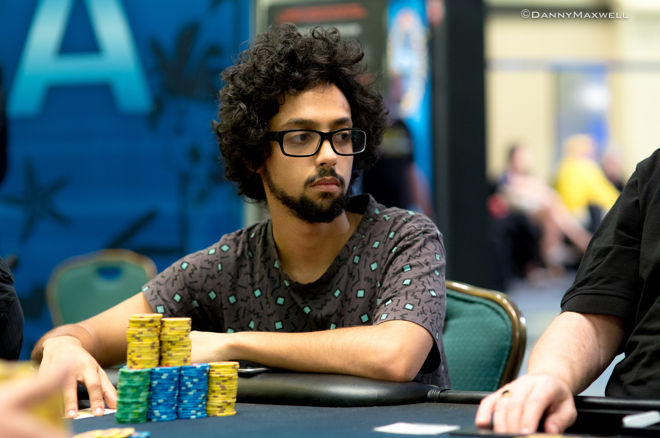
Covering live poker tournaments for a living affords me the opportunity to see countless thousands of hands played out, many of which offer interesting and potentially valuable insights into how players �� both amateurs and professionals �� play the game. In this ongoing series, I��ll highlight hands I��ve seen at the tournaments I��ve covered and see if we can glean anything useful from them.
The Scene
Back on the tournament trail, this hand comes from the $5,300 buy-in 2016 PokerStars Caribbean Adventure Main Event, which wrapped up a few weeks ago. At this point, 31 players remain out of 928, with the next payout receiving $20,120. Of course, everyone has eyes on the first-place prize of more than $800,000.
This week��s hand comes from the live streamed feature table at the end of Level 22 (8,000/16,000/2,000). The table had a sick lineup of players, highlighted by Team PokerStars Pro Jason Mercier, Ami Barer, and Taylor Paur. None of those heavy hitters would be involved in this exciting hand, though.
The Action
Starting with about 600,000 in his stack, French player Paul Tedeschi raised to 36,000 from middle position and received two callers who both had him covered, the UK��s Phillip McAllister on the button (pictured above) and Fabian Chauriye of Chile in the big blind.
The flop came Q?8?4?, and Tedeschi and Chauriye both checked. McAllister bet 48,000 and everyone came along to see the J? turn. Two checks later, McAllister bet 136,000, and Chauriye called. Tedeschi jammed for 388,000 more, and both of his opponents called.
The A? arrived on the river, completing two draws, and Chauriye bet 300,000 into the dry side pot. McAllister moved all in for 1.265 million effective, putting Chauriye at risk. The Chilean player stood up and eyed McAllister.
��Don��t be mad if I bluff you off a chop,�� McAllister said.
Chauriye tanked for more than four minutes before releasing his hand. He was glad he did after McAllister showed K?10?, having gone runner-runner for the royal flush to knock out Tedeschi, who with Q?Q? had a set of queens.
Concept and Analysis
This hand begins with a standard preflop open from Tedeschi holding a premium hand and sitting behind a stack of around 35 big blinds. He gets two calls from players who cover him and basically the dream flop hits: Q?8?4?, giving him top set.
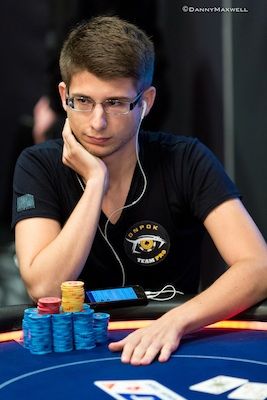
Now Tedeschi��s in middle position with a monster, but he decides to check after Chauriye checks in front of him. It��s an interesting decision, given how vulnerable top set is on that board. There are a slew of turn cards that can beat him. So why risk giving a free card?
For one thing, perhaps he was confident McAllister would bet in position. McAllister had been playing very actively and aggressively, and if McAllister bets, Tedeschi might be able to catch Chauriye in the middle and build a bigger pot with the current nuts. Also, McAllister flatted from the button preflop, meaning his range is quite wide and includes lots of connectors that have flopped straight and flush draws. Tedeschi doesn��t know which turn cards beat him, and he��ll be forced to check pretty often, ceding control of the pot to McAllister.
If Tedeschi did check expecting McAllister to bet, he had the situation pegged because that��s what happened. Again, after Chauriye calls Tedeschi opts to play it passively and just call as well, and the J? turn that follows is a mixed bag. Now, Tedeschi could be beaten, but most likely he��s still best and the card could well improve someone and entice them to stick around.
What Tedeschi may not have counted on after he and Chauriye checked was the latter player sticking around and calling the much larger turn bet from McAllister, who let his opponents know he was serious about the hand at this point. Chauriye calls the big bet, and Tedeschi has no choice at that point but to jam.
Unfortunately for him, because of the sizing and the now-bloated pot, he has little fold equity, and McAllister is priced in with his combo draw. Chauriye calls as well, and Tedeschi has effectively trapped himself into a three-way pot where many hands have solid equity against him. On the other hand, he stands a very good chance of tripling up if the river is a brick. His play is risky, but the payoff could be huge, and putting himself in position to win the tournament is the whole idea.
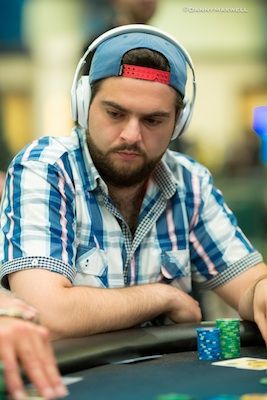
Of note here is McAllister��s turn play. He elects to bet with his draw in a spot where he��s been checked to by two players and someone could well have made two pair or a straight. Is checking back the play? I think it is here, as it��s very likely at least one opponent has a good enough hand to continue, if not a hand with which he is planning on shoving.
As played, McAllister is forced to call the shove and is fortunate enough get the unbeatable royal flush. Now, a final turning point comes when Chauriye decides to lead out on the river for a very small bet of less than a quarter of the pot. McAllister does the only thing he can and shoves, and Chauriye tanks a long time before folding.
We can��t know what he tanked with, but this should mostly be an automatic fold. Looking at the situation, there��s an all-in player and a side pot that��s dwarfed by the main pot. The board is very dangerous, and Chauriye has led out into a dry side pot, representing great strength. Therefore, McAllister should only be shoving if he is incredibly strong, with the only plausible bluffs likely including the K? �� but what hands with the bare K? even make sense to call the turn?
Chauriye makes the sensible move and lets it go, concluding a dynamic hand with a variety of decisions for all three players in a high-stakes spot.

